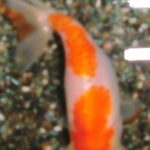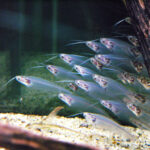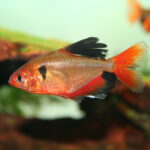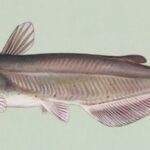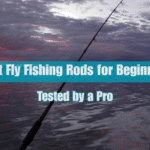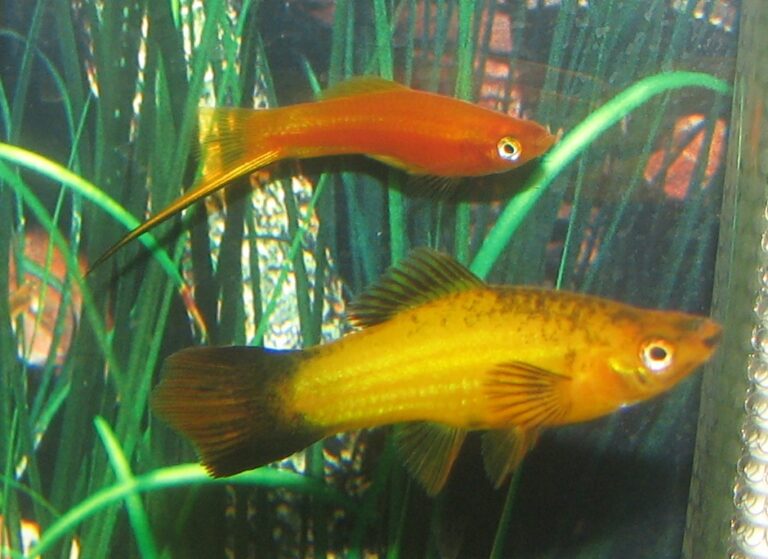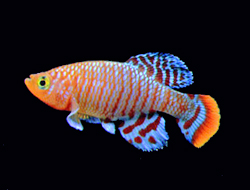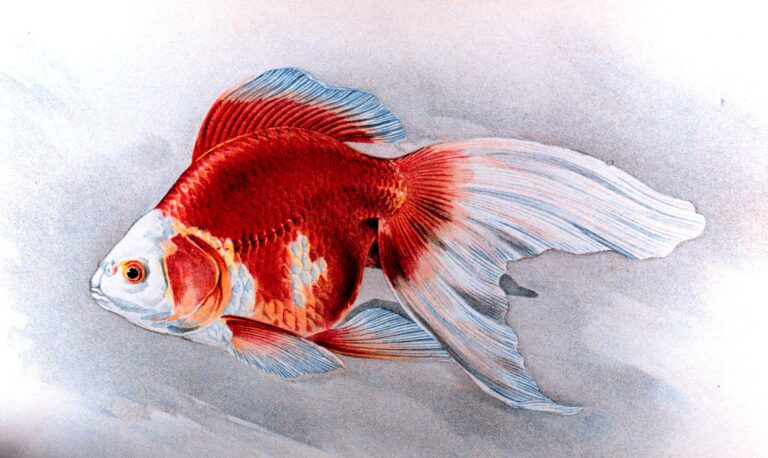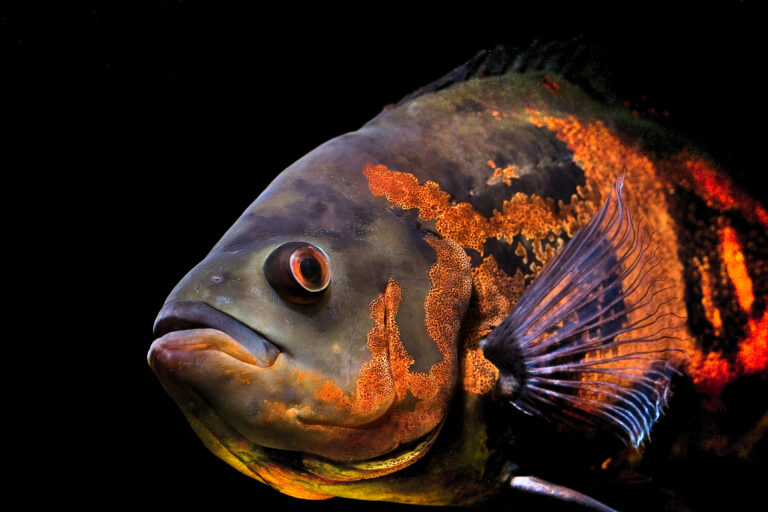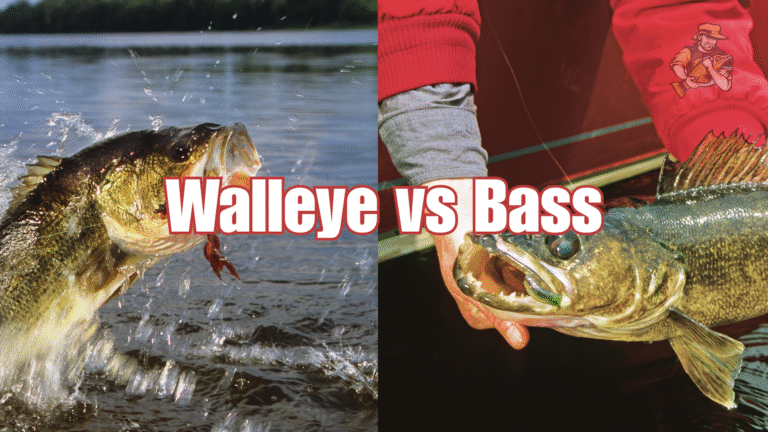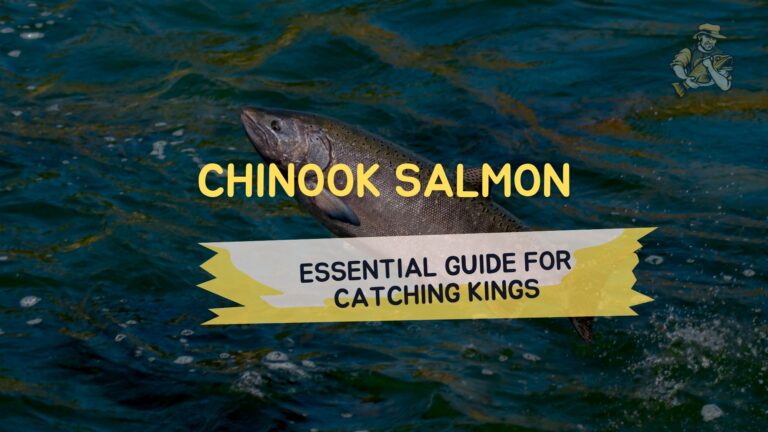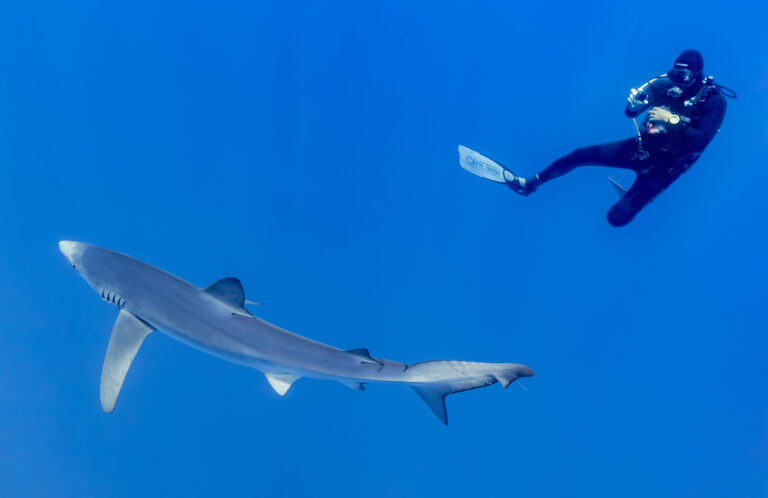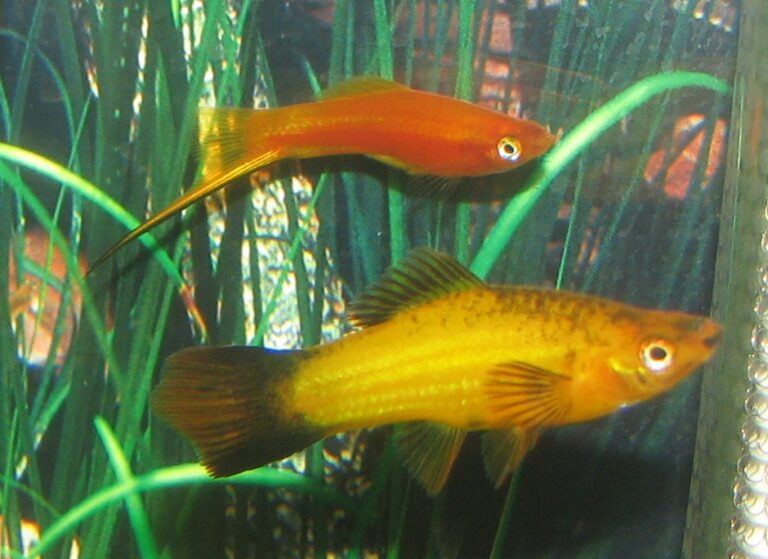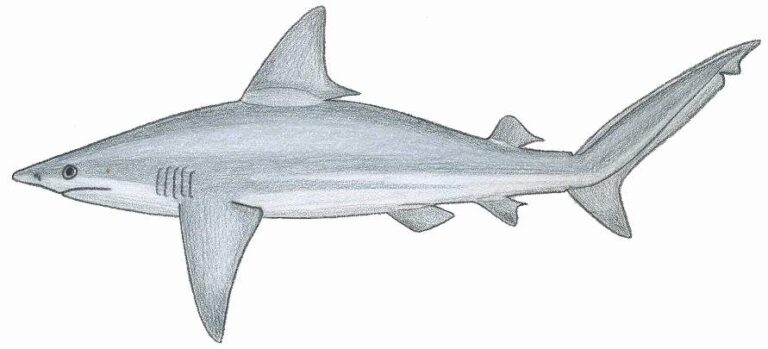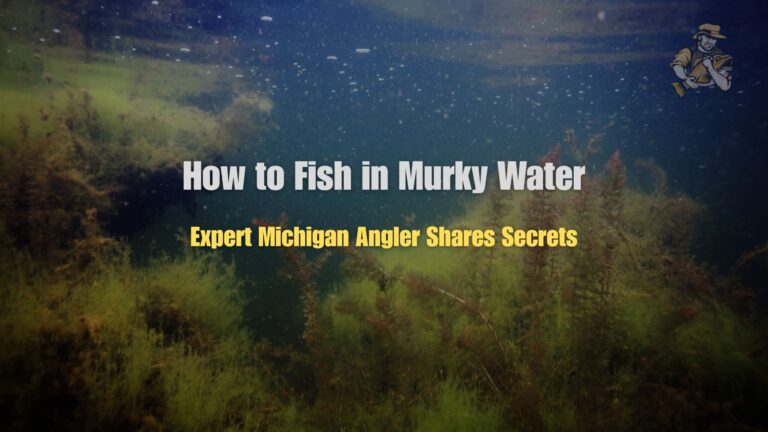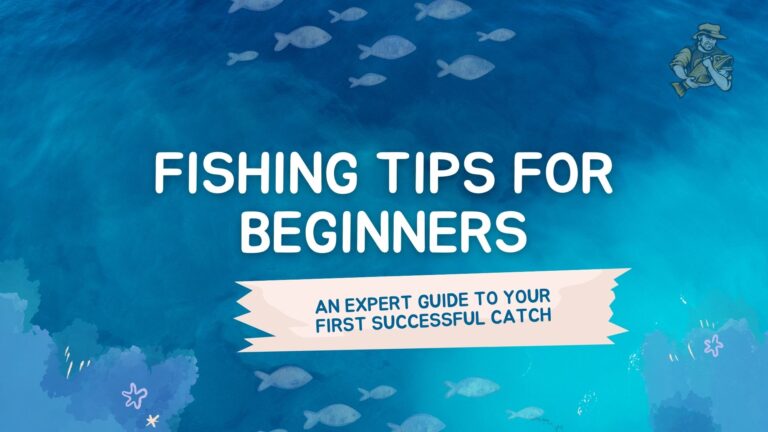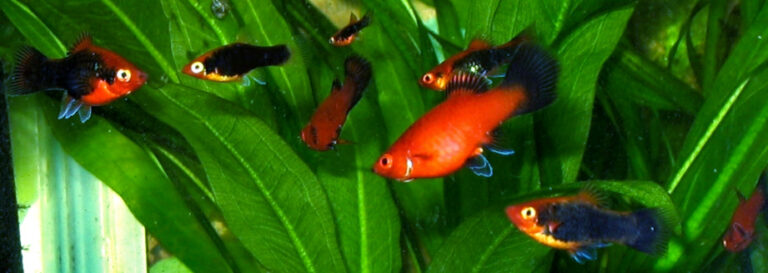Corydoras Catfish
By Ryan Maron | Last Modified: June 6, 2025
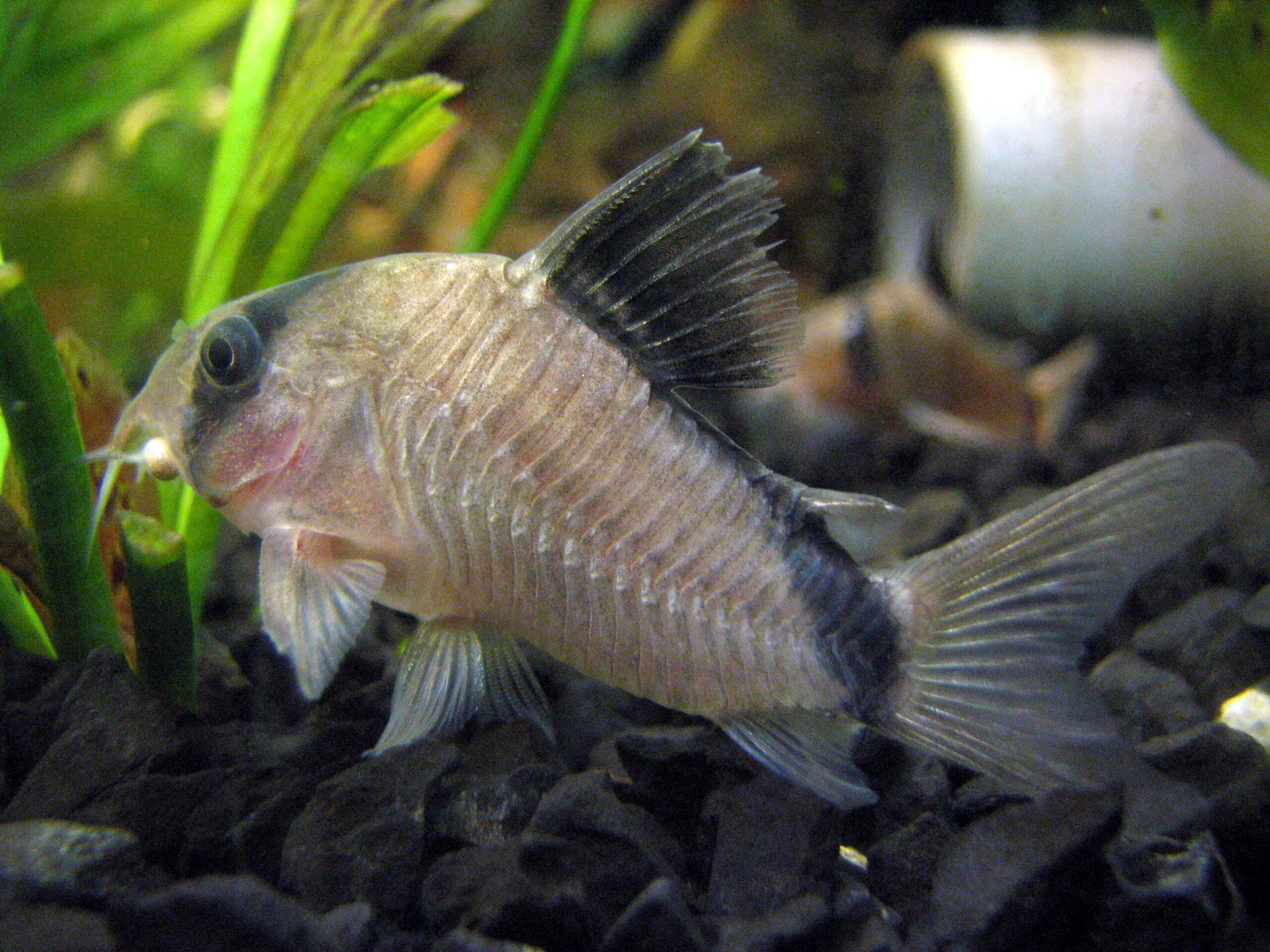
Corydoras catfish represent one of the most diverse and ecologically significant groups of freshwater bottom-dwelling fish in South American aquatic ecosystems. These small, armored catfish belong to the genus Corydoras within the family Callichthyidae, comprising over 160 recognized species that inhabit river systems throughout the Amazon Basin and beyond. Their distinctive barbels, protective bony plates, and schooling behavior make them instantly recognizable to both aquarists and field researchers studying neotropical ichthyofauna.
The ecological importance of Corydoras catfish extends far beyond their popularity in the aquarium trade. These fish serve as crucial detritus processors in their natural habitats, breaking down organic matter and redistributing nutrients throughout river and stream ecosystems. Their constant foraging activity helps maintain substrate quality and supports the complex food webs that characterize South American freshwater environments. Additionally, many Corydoras species function as indicator species for ecosystem health, with their presence often signaling stable water quality and intact habitat conditions.
| Feature | Details |
| Common Name | Corydoras Catfish |
| Scientific Name | Corydoras spp. |
| Family | Callichthyidae |
| Typical Size | 2.5-12 cm (1-5 inches), 5-45 grams |
| Habitat | Freshwater rivers and streams |
| Diet | Omnivorous bottom-feeder |
| Distribution | South America |
| Conservation Status | Varies by species (mostly Least Concern) |
Taxonomy & Classification
The genus Corydoras was first established by French zoologist Achille Valenciennes in 1840, with Corydoras geoffroyi designated as the type species. Within the broader taxonomic framework, these catfish belong to the order Siluriformes, which encompasses all catfish species worldwide. The family Callichthyidae, commonly known as armored catfish, includes two primary subfamilies: Corydoradinae, containing the genus Corydoras, and Callichthyinae, which includes genera such as Callichthys and Hoplosternum.
Recent molecular phylogenetic studies have revealed significant complexity within the Corydoras genus, leading to ongoing taxonomic revisions. Many species previously classified under Corydoras have been reclassified into separate genera, including Scleromystax and Aspidoras. This taxonomic restructuring reflects advances in genetic analysis techniques and improved understanding of evolutionary relationships among South American catfish lineages.
The classification of Corydoras species relies heavily on morphological characteristics, including body plate arrangements, fin ray counts, and coloration patterns. However, the high degree of morphological similarity among species has historically created challenges for taxonomists. DNA barcoding and molecular phylogenetics have become increasingly important tools for resolving species boundaries and identifying cryptic species within the genus.
Currently recognized Corydoras species are grouped into several major lineages based on morphological and genetic characteristics. These lineages often correspond to geographical distributions and ecological adaptations, suggesting that speciation within the genus has been strongly influenced by habitat specialization and geographical isolation events throughout South American geological history.
Physical Description
Corydoras catfish exhibit a distinctive body plan characterized by their laterally compressed, torpedo-shaped profile and armored exterior. The most recognizable feature of these fish is their series of overlapping bony plates, called scutes, which provide protection from predators while maintaining flexibility for swimming. These plates are arranged in two longitudinal rows along each side of the body, with additional plates protecting the head and dorsal regions.
The head structure of Corydoras catfish reflects their bottom-dwelling lifestyle and feeding habits. Their downward-facing mouth is surrounded by three pairs of barbels: one pair on the maxilla and two pairs on the mandible. These sensitive barbels serve as tactile organs, allowing the fish to locate food items buried in substrate materials. The eyes are positioned laterally on the head, providing excellent peripheral vision for detecting predators and conspecifics.
Body size varies considerably among Corydoras species, ranging from the diminutive Corydoras hastatus at approximately 2.5 centimeters to larger species like Corydoras barbatus, which can reach lengths of 12 centimeters. Most species fall within the 4-8 centimeter range, making them well-suited to their ecological niche as small-bodied detritus feeders. Sexual dimorphism is generally subtle, with females typically displaying broader bodies and slightly larger overall size compared to males.
Coloration patterns in Corydoras catfish serve both camouflage and species recognition functions. Many species exhibit countershading, with darker dorsal surfaces and lighter ventral areas that help them blend with substrate materials. Distinctive patterns, including spots, stripes, and geometric markings, vary significantly between species and often provide the primary means of field identification. Some species, such as Corydoras sterbai, display intricate spotted patterns, while others like Corydoras panda feature bold contrasting bands.
Habitat & Distribution
Corydoras catfish occupy diverse freshwater habitats throughout South America, with their distribution extending from the Orinoco River system in Venezuela and Colombia through the Amazon Basin to coastal river systems in southeastern Brazil. The greatest species diversity occurs within the Amazon Basin, where the complex network of tributaries and varying water conditions has promoted extensive speciation over evolutionary time scales.
These catfish demonstrate remarkable adaptability to different aquatic environments, inhabiting everything from fast-flowing mountain streams to slow-moving lowland rivers and seasonal floodplain areas. Water temperature preferences vary among species, with most thriving in tropical conditions between 22-28°C (72-82°F). pH tolerance ranges from slightly acidic to neutral conditions, typically between 6.0-7.5, reflecting the naturally soft water characteristics of many South American river systems.
Substrate composition plays a crucial role in Corydoras habitat selection. Most species prefer sandy or fine gravel substrates that allow for comfortable foraging without damaging their sensitive barbels. Areas with moderate water flow, abundant organic matter, and nearby shelter in the form of fallen logs, rocks, or aquatic vegetation provide optimal habitat conditions. The presence of leaf litter and detritus accumulations creates the microhabitats these fish depend upon for feeding and reproduction.
Seasonal water level fluctuations significantly influence Corydoras ecology throughout their range. During dry seasons, many species concentrate in deeper river channels and permanent water bodies. Wet season flooding provides access to extensive floodplain areas where food resources become abundant and spawning opportunities increase. This seasonal migration pattern has shaped the life history strategies of many Corydoras species and contributes to their ecological success.
Human activities have increasingly impacted Corydoras habitats across South America. Deforestation, agricultural runoff, mining operations, and dam construction have altered water chemistry and flow patterns in many river systems. Some species with restricted distributions face particular vulnerability to habitat degradation, highlighting the importance of watershed conservation efforts for maintaining Corydoras diversity.
Diet & Feeding Behavior
Corydoras catfish function as opportunistic omnivores with a feeding strategy primarily focused on benthic foraging. Their diet consists of organic detritus, small invertebrates, plant matter, and occasionally fish eggs or fry. This varied diet reflects their ecological role as nutrient recyclers within freshwater ecosystems, breaking down organic matter and making nutrients available to other organisms in the food web.
The feeding mechanism of Corydoras catfish involves systematic substrate sifting using their specialized mouth structure and barbels. These fish employ a characteristic head-down foraging posture, using their barbels to probe soft sediments for buried food items. When prey or detritus is located, they use suction feeding to extract materials from the substrate, expelling unwanted sediment through their gill openings while retaining nutritious particles.
Invertebrate prey items form a significant component of the Corydoras diet, particularly during reproductive periods when protein requirements increase. Common prey includes chironomid larvae, small worms, crustaceans, and various aquatic insect larvae. The size and type of invertebrate prey varies with fish size and habitat characteristics, with smaller species focusing on meiofauna while larger species can handle more substantial prey items.
Feeding activity patterns in Corydoras catfish show both diurnal and crepuscular components, with peak foraging often occurring during dawn and dusk periods. This timing corresponds with increased invertebrate activity and reduced predation pressure from visual predators. However, feeding continues throughout daylight hours at reduced intensity, reflecting the continuous energy requirements of these active fish.
The social nature of Corydoras feeding behavior enhances foraging efficiency through group dynamics. When one individual locates a productive feeding area, others are quickly attracted to the disturbance, creating feeding aggregations that can efficiently process patches of organic matter. This cooperative feeding behavior, combined with their substrate processing activities, makes Corydoras catfish important contributors to nutrient cycling in freshwater ecosystems.
Behavior & Adaptations
The schooling behavior of Corydoras catfish represents one of their most distinctive behavioral adaptations, with groups ranging from small aggregations of 6-10 individuals to massive schools containing hundreds of fish. This gregarious nature provides multiple advantages, including enhanced predator detection, improved foraging efficiency, and increased reproductive success through synchronized spawning activities.
Communication within Corydoras schools involves both visual and acoustic signals. These fish can produce clicking sounds using their pectoral fin spines, particularly during aggressive encounters or courtship activities. The sounds are generated by rapid contractions of sonic muscles attached to the pectoral girdle, creating mechanical vibrations that transmit through the water column. This acoustic communication system helps maintain school cohesion and facilitates social interactions.
Respiratory adaptations allow Corydoras catfish to survive in oxygen-poor environments common in many South American water bodies. They possess the ability to gulp atmospheric oxygen at the water surface, supplementing their gill respiration with intestinal air breathing. This adaptation enables them to inhabit densely vegetated areas where dissolved oxygen levels fluctuate dramatically between day and night periods.
Defensive adaptations in Corydoras catfish include their protective armor plating and specialized fin spine mechanisms. When threatened, these fish can lock their dorsal and pectoral fin spines in an extended position, making them difficult for predators to swallow. The sharp, serrated spines can inflict wounds on attackers and often contain mild toxins that provide additional deterrent effects.
Territoriality in Corydoras catfish is generally limited, with most species showing peaceful coexistence even in high-density populations. However, some larger species may exhibit territorial behavior during breeding seasons, particularly males defending spawning sites. This flexible social structure allows efficient resource utilization while minimizing intraspecific competition in environments where food resources may be patchily distributed.
Reproduction & Life Cycle
Corydoras catfish exhibit fascinating reproductive strategies that vary considerably among species but generally follow patterns adapted to seasonal flood cycles in South American river systems. Most species are egg-scatterers that practice external fertilization, with spawning activities typically triggered by environmental cues such as decreased water temperature, increased dissolved oxygen levels, and changes in water chemistry associated with seasonal rains.
The courtship behavior of Corydoras catfish involves elaborate rituals where males compete for female attention through displays and physical interactions. Males often pursue females in spiraling swimming patterns while producing acoustic signals with their pectoral fins. Successful males position themselves alongside receptive females in a characteristic T-formation, where the female grasps the male’s barbels with her pectoral fins while collecting sperm in her mouth.
Egg-laying behavior demonstrates remarkable adaptation to environmental conditions, with females carefully selecting spawning substrates that provide optimal conditions for embryonic development. Eggs are typically deposited on solid surfaces such as rocks, logs, or aquatic vegetation, with females using their ventral fins to press fertilized eggs firmly against the chosen substrate. The adhesive properties of the eggs ensure secure attachment during the incubation period.
Incubation periods vary with water temperature and species, typically ranging from 4-7 days under optimal conditions. The transparent eggs allow observation of embryonic development, with visible eye spots appearing within 48-72 hours of fertilization. Newly hatched larvae possess large yolk sacs that provide nutrition during the critical first days of life when feeding capabilities are still developing.
Juvenile development in Corydoras catfish follows typical patterns for armored catfish, with young fish initially seeking shelter in shallow, vegetated areas where food resources are abundant and predation pressure is reduced. Growth rates vary significantly among species and environmental conditions, with most fish reaching sexual maturity within 8-12 months under favorable conditions. The schooling instinct develops early, with juvenile fish joining mixed-age groups that provide protection and learning opportunities for developing feeding and social behaviors.
Predators & Threats
Corydoras catfish face predation pressure from a diverse array of aquatic and semi-aquatic predators throughout their range. Primary predators include larger catfish species, cichlids, characins, and various piscivorous fish that share South American freshwater habitats. The small size of most Corydoras species makes them vulnerable to predation despite their protective armor, particularly during juvenile stages when defensive capabilities are less developed.
Avian predators represent significant threats in shallow water environments where Corydoras catfish frequently forage. Herons, egrets, and other wading birds are efficient hunters of small bottom-dwelling fish, using their keen eyesight and rapid striking ability to capture unwary individuals. Kingfishers and other diving birds also pose threats in deeper water areas where Corydoras schools may venture during feeding activities.
The protective adaptations of Corydoras catfish provide effective defense against many predators but are not foolproof. Their bony armor can deter smaller predators and make them difficult to swallow for medium-sized fish, but large predators with powerful jaws can overcome these defenses. The locking fin spine mechanism provides additional protection, though determined predators may still succeed in consuming these fish.
Anthropogenic threats increasingly impact Corydoras populations across their range. Habitat destruction through deforestation removes riparian vegetation that provides essential shade and organic matter input to aquatic systems. Agricultural runoff introduces pesticides and fertilizers that can alter water chemistry and reduce invertebrate prey populations that form the foundation of Corydoras food webs.
Water pollution from mining activities, particularly gold mining in the Amazon Basin, introduces heavy metals and sediments that can accumulate in bottom-dwelling fish like Corydoras catfish. These contaminants can affect reproduction, growth, and survival while also making the fish unsafe for human consumption. Dam construction alters natural flow patterns and can fragment populations, preventing seasonal migrations essential for reproduction and genetic exchange.
Collection pressure for the aquarium trade affects some Corydoras species, particularly those with attractive coloration or restricted distributions. While most species can sustain moderate collection pressure, rare species or those with limited ranges may face population declines if collection activities are not properly managed and regulated.
Conservation Status
The conservation status of Corydoras catfish varies significantly among the numerous species within the genus, with most species currently classified as Least Concern by the IUCN Red List. However, this classification often reflects limited data availability rather than comprehensive population assessments, as many Corydoras species have restricted distributions and have not been thoroughly studied in their natural habitats.
Several factors contribute to the generally stable conservation status of most Corydoras species. Their wide distribution throughout South America, adaptability to various habitat conditions, and high reproductive potential provide resilience against moderate environmental pressures. Additionally, their importance in the aquarium trade has motivated captive breeding programs that maintain genetic diversity and reduce collection pressure on wild populations.
Species of particular conservation concern include those with highly restricted distributions or specific habitat requirements. Corydoras species endemic to single river systems or small geographical areas face elevated extinction risk from habitat modification or environmental degradation. Climate change poses additional threats through altered precipitation patterns that could affect seasonal flooding cycles essential for reproduction and feeding.
The lack of comprehensive population data for many Corydoras species hampers conservation planning efforts. Most species descriptions are based on limited museum specimens, with little information about population sizes, distribution boundaries, or ecological requirements. This knowledge gap highlights the need for systematic surveys and long-term monitoring programs to assess conservation needs accurately.
Conservation strategies for Corydoras catfish must address both species-specific and ecosystem-level threats. Watershed protection through establishment of protected areas and regulation of development activities provides broad-scale habitat conservation that benefits multiple species simultaneously. International cooperation between South American countries is essential for protecting transboundary river systems that support diverse Corydoras assemblages.
Sustainable aquarium trade practices, including certification programs for wild-caught fish and promotion of captive-bred specimens, can reduce collection pressure while maintaining the economic incentives that support local conservation efforts. Education programs that highlight the ecological importance of Corydoras catfish can build public support for conservation initiatives and promote responsible aquarium keeping practices among hobbyists worldwide.
Human Interaction
The relationship between humans and Corydoras catfish extends back centuries in South America, where indigenous communities have long recognized these fish as important components of freshwater ecosystems. Traditional fishing practices often target larger fish species while allowing Corydoras populations to remain relatively undisturbed, contributing to the historical stability of many populations throughout their range.
The modern aquarium trade represents the most significant form of human interaction with Corydoras catfish, with millions of individuals exported annually from South American countries to aquarium markets worldwide. This trade provides important economic benefits to local communities involved in collection, breeding, and export activities. Countries like Brazil, Peru, and Colombia have developed substantial industries around ornamental fish exports, with Corydoras species representing significant portions of total export volumes.
Captive breeding of Corydoras catfish has become increasingly sophisticated, with commercial breeding facilities and dedicated hobbyists successfully reproducing dozens of species in controlled environments. These breeding programs have reduced pressure on wild populations while providing consistent supplies of healthy fish to the aquarium trade. Advanced breeding techniques have enabled reproduction of species previously considered difficult to breed in captivity.
Scientific research involving Corydoras catfish has contributed valuable insights into fish behavior, ecology, and evolution. These fish serve as model organisms for studies of schooling behavior, sensory biology, and reproductive strategies. Their relatively small size and hardy nature make them suitable for laboratory research, though most studies still rely on field observations to understand their natural behaviors and ecological roles.
Fishing enthusiasts exploring South American waters occasionally encounter Corydoras catfish, though these small bottom-dwellers are rarely targeted by recreational anglers. Their presence often indicates healthy aquatic ecosystems, making them valuable indicator species for assessing environmental conditions in areas where fishing activities occur.
The educational value of Corydoras catfish in public aquariums and educational institutions cannot be overstated. Their peaceful nature, interesting behaviors, and ecological importance make them excellent ambassadors for freshwater conservation efforts. Many public aquariums feature South American biotope exhibits that showcase Corydoras species alongside other regional fish fauna, helping visitors understand the complexity and importance of neotropical freshwater ecosystems.
Environmental monitoring programs increasingly utilize Corydoras catfish as indicator species for assessing ecosystem health in South American river systems. Their sensitivity to water quality changes and dependence on intact substrate conditions make them valuable early warning indicators for environmental degradation. Monitoring programs that track Corydoras populations can provide important data for conservation planning and environmental management decisions.
Interesting Facts
Corydoras catfish possess remarkable longevity for small freshwater fish, with some species documented to live over 20 years in optimal conditions. This exceptional lifespan, combined with their continued growth throughout life, allows individuals to accumulate extensive knowledge of their local environment and contribute to population stability through multiple reproductive cycles.
The swimming behavior of Corydoras catfish includes a fascinating ability to perform rapid vertical movements to the water surface for atmospheric breathing. These “dash to surface” behaviors can occur dozens of times per hour during periods of low dissolved oxygen, demonstrating their remarkable physiological adaptations to challenging environmental conditions.
Recent discoveries have revealed that several Corydoras species exhibit facultative air breathing capabilities that extend beyond simple oxygen supplementation. Some species can survive extended periods out of water when moving between pools during dry seasons, using their intestinal breathing system to maintain metabolic functions during terrestrial excursions.
The acoustic communication system of Corydoras catfish includes species-specific sound patterns that may function in species recognition and mate selection. Research has identified distinct clicking patterns associated with different behavioral contexts, suggesting a more complex communication system than previously recognized. These sounds can be detected by specialized hydrophones and provide insights into fish behavior and population dynamics.
Corydoras catfish demonstrate remarkable homing abilities, with tagged individuals documented returning to specific spawning areas across distances of several kilometers. This site fidelity suggests sophisticated navigation capabilities that may involve magnetic, chemical, or acoustic cues for orientation in turbid river environments.
The protective fin spine mechanism in Corydoras catfish operates through a complex anatomical structure that can lock spines in extended positions with remarkable force. The unlocking mechanism requires specific muscle contractions that may be inhibited during stress responses, explaining why these fish sometimes become “stuck” in defensive positions when handled improperly.
Some Corydoras species exhibit seasonal color changes associated with reproductive cycles, with breeding adults developing intensified coloration and distinct patterns not seen in non-reproductive individuals. These temporary color changes may function in mate recognition and sexual selection, adding another layer of complexity to their reproductive biology.
Similar to tetra fish species, Corydoras catfish play crucial roles in South American freshwater food webs, though their bottom-dwelling lifestyle creates different ecological interactions. Their substrate processing activities can significantly alter sediment composition and nutrient availability in river systems, influencing the broader aquatic community structure.
The diversity of Corydoras species continues to expand through ongoing taxonomic research, with new species descriptions published regularly in scientific literature. Molecular genetic techniques have revealed cryptic species complexes that were previously unrecognized, suggesting that total Corydoras diversity may be significantly higher than current estimates indicate.
Frequently Asked Questions
How many Corydoras catfish species are currently recognized?
Over 160 Corydoras species are currently recognized by taxonomists, though this number continues to change as new species are discovered and taxonomic revisions occur. Recent molecular studies suggest that total diversity may be significantly higher due to the presence of cryptic species complexes that are morphologically similar but genetically distinct. The majority of described species are found within the Amazon Basin, with new species regularly discovered in remote tributary systems.
What is the ideal water temperature range for Corydoras catfish?
Most Corydoras species thrive in water temperatures between 22-28°C (72-82°F), reflecting their tropical South American origins. Species from higher altitude regions may prefer slightly cooler temperatures, while lowland species typically prefer the warmer end of this range. Seasonal temperature variations of 2-3°C can be beneficial for triggering reproductive behaviors, mimicking natural conditions in their native habitats.
How do Corydoras catfish contribute to aquarium ecosystem health?
Corydoras catfish serve as efficient biological cleaners in aquarium environments, consuming leftover food, organic detritus, and small invertebrates that accumulate in substrate materials. Their constant foraging activity helps prevent the buildup of organic waste that could lead to water quality problems. Additionally, their substrate stirring behavior promotes beneficial bacterial activity and prevents the formation of anaerobic zones in tank substrates.
What distinguishes Corydoras catfish from other armored catfish species?
While platy fish varieties represent completely different taxonomic groups, Corydoras catfish can be distinguished from other armored catfish by their specific body plate arrangements, barbel configuration, and fin spine structures. They possess three pairs of barbels compared to the two pairs found in many related species, and their dorsal fin spine typically has a serrated posterior edge. The arrangement of body scutes follows species-specific patterns that are crucial for taxonomic identification.
Conclusion
Corydoras catfish represent a remarkable example of evolutionary success in South American freshwater environments, with their diverse species assemblages contributing significantly to ecosystem function and stability. Their roles as detritus processors, prey species, and indicator organisms highlight the interconnected nature of aquatic food webs and the importance of maintaining habitat integrity for preserving biodiversity. As human pressures continue to impact freshwater ecosystems throughout their range, understanding basic aquatic ecosystem principles becomes increasingly important for developing effective conservation strategies that protect these ecologically valuable fish and their habitats for future generations.
Share The Article:
More Fish Species:
-
Pineapple Swordtail
The Pineapple Swordtail (*Xiphophorus hellerii* var. pineapple) represents one of the most striking color variants of the common swordtail,…
-
Killifish
Killifish represent one of the most diverse and ecologically significant groups of small freshwater and brackish water fish, comprising…
-
Diamond Tetra
The Diamond Tetra (Moenkhausia pittieri) stands as one of the most captivating freshwater fish species in the aquarium trade…
-
Ryukin Goldfish
The Ryukin Goldfish (Carassius auratus) stands as one of the most distinctive and culturally significant ornamental fish varieties in…
-
Oscar Fish
The Oscar Fish (*Astronotus ocellatus*) stands as one of South America’s most recognizable freshwater cichlids, earning widespread recognition both…
-
Silky Shark
The Silky Shark represents one of the most widespread and ecologically significant requiem sharks in tropical and subtropical waters…
Discover
-
River Fishing Techniques: Master the Moving Water
Fishing rivers presents a unique set of challenges and rewards that I’ve come to appreciate over my three decades…
-
Walleye vs Bass: Different Strategies for Freshwater Predators
I still remember my first dedicated walleye trip back in 2009. After fifteen years of chasing mostly bass, I…
-
Chinook Salmon: Essential Guide for Catching Kings
There’s something almost magical about the moment when a Chinook salmon takes your lure. That heart-stopping tug, followed by…
-
Pacific Northwest Salmon Fishing: Guide to Puget Sound and Columbia River
There’s something almost magical about the way Pacific Northwest salmon fight on the end of your line. I still…
-
Best Fishing Lures for Walleye: Pro Secrets You Won’t Believe
Let me tell you something about walleye fishing that most anglers get completely wrong. After 30+ years of chasing…
-
Blue Shark
The Blue Shark (Prionace glauca) represents one of the ocean’s most accomplished travelers, traversing entire ocean basins in epic…
Discover
-
Swordtail Fish
The Swordtail Fish (Xiphophorus hellerii) stands as one of the most recognizable and beloved species in the aquarium trade,…
-
Sandbar Shark
The Sandbar Shark (Carcharhinus plumbeus) stands as one of the most recognizable and ecologically significant members of the requiem…
-
Pensacola Fishing Tides Decoded: Fish More, Catch More
Look, I’ve spent the better part of my fishing life getting absolutely schooled by Pensacola’s tides. Just last month,…
-
How to Fish in Murky Water: Expert Michigan Angler Shares Secrets
Last Tuesday, I was standing knee-deep in chocolate-colored water where Kellogg Creek dumps into the Kalamazoo River. Water visibility:…
-
Fishing Tips for Beginners: An Expert Guide to Your First Successful Catch
Getting started with fishing can feel overwhelming. Trust me, I’ve been there – staring at walls of equipment, trying…
-
Southern Platyfish
The Southern Platyfish, scientifically known as *Xiphophorus maculatus*, represents one of the most significant freshwater fish species in both…

